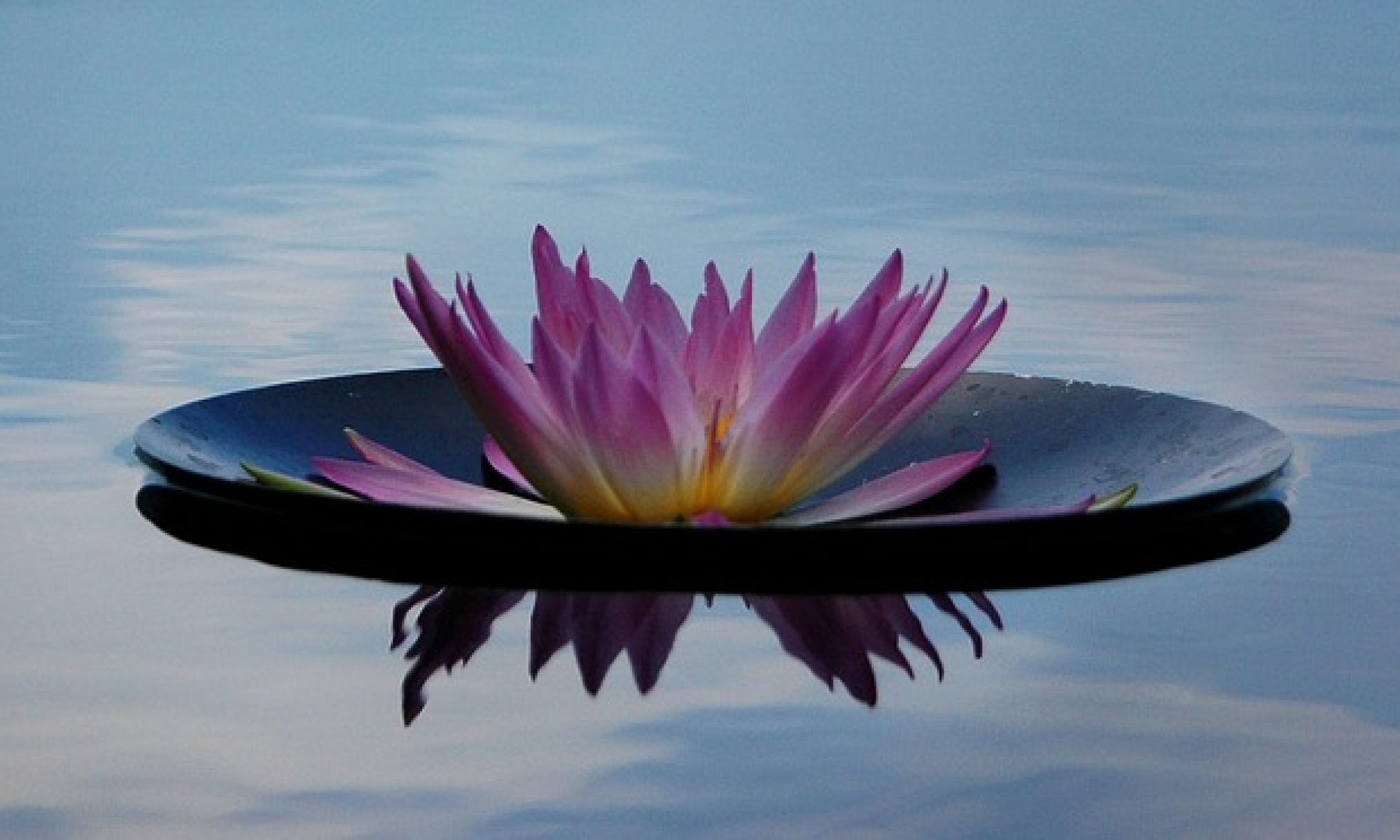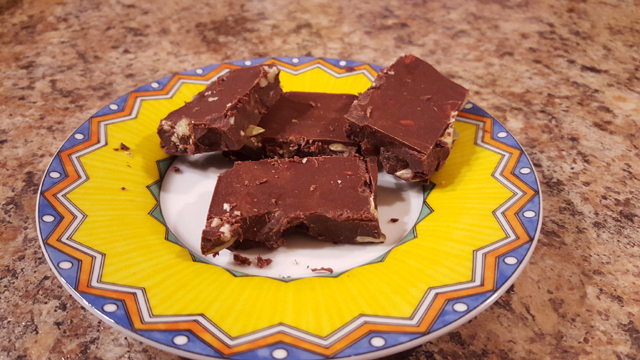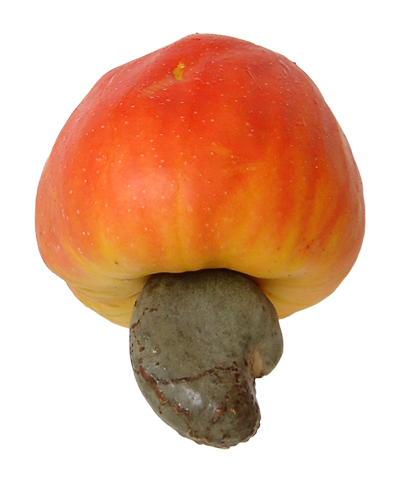Once you eat this chocolate bark you will not be able to buy a chocolate bar from the store anymore. This is so easy to make and you can’t really go wrong. You taste it as you go and you can make it exactly the way you want.
Basic ingredients:
½ cup cacao butter
½ cup cacao powder
Maple syrup to taste
Salt to taste
Optional ingredients: (one or a combination of)
Dry raisins
Dry cranberries
Pumpkin seeds
Sunflower seeds
Hemp seeds
Crushed nuts (almonds or walnuts or pecan)
Chili pepper (for a nice spicy chocolate)
Directions:
1. Place the cacao butter in a double boiler.
2. Once the cacao butter starts to melt, reduce the heat or even turn it off. You don’t want it to become hot, just melted. If it stops melting, raise the heat a little.
3. With the help of a sifter, slowly sprinkle the cacao powder on the melted cacao butter.
4. Mix the cacao butter and cacao powder together as you are sifting.
5. Add the maple syrup to the chocolate liquid and keep mixing.
6. Add salt.
7. Taste and adjust to the darkness, sweetness or salt amount to your liking.
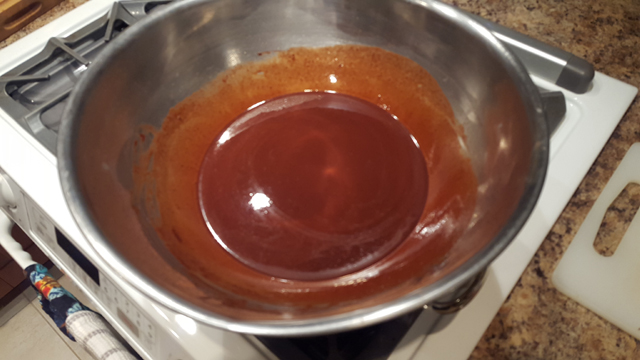
8. Place a parchment paper with the side raised in the bottom pan or Pyrex.
9. Uniformly sprinkle the dry fruits, nuts, and seeds in the bottom of the pan.
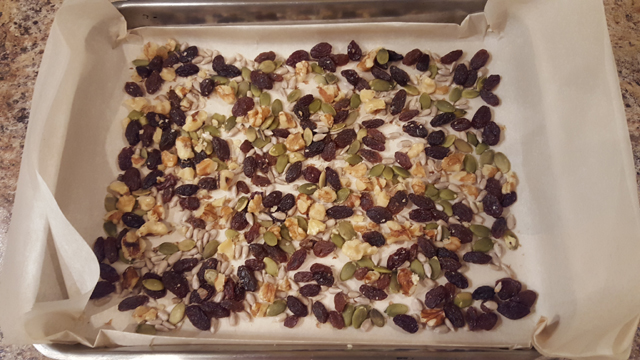
10. Pour the melted chocolate mixture into the seeds and nuts.
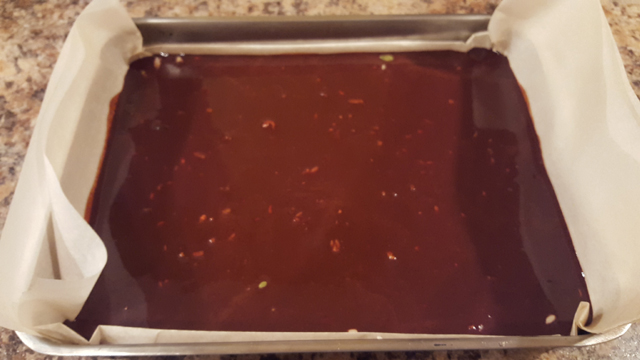
11. Place it in the refrigerator or freezer for 20 minutes or so. You can also sprinkle coarse salt, hemp seeds or sesame seeds on top for garnish.
12. Before it gets completely hard, you can cut into the preferred pieces sizes and place back in the refrigerator.

Or once ready you can just break it by hand into pieces and enjoy.
The nice thing about using cacao butter is that your chocolate will not soften or melt when outside refrigerator, unlike coconut butter that melts with the temperature of your fingers and is very soft at room temperature.
Have fun and be creative.
Would you like more recipes like this one?
Click Here to Subscribe
